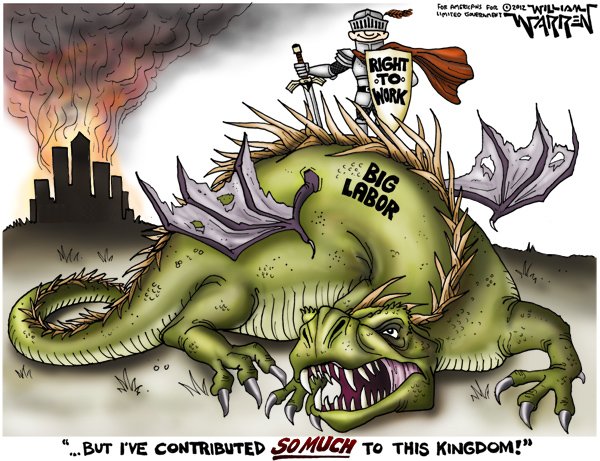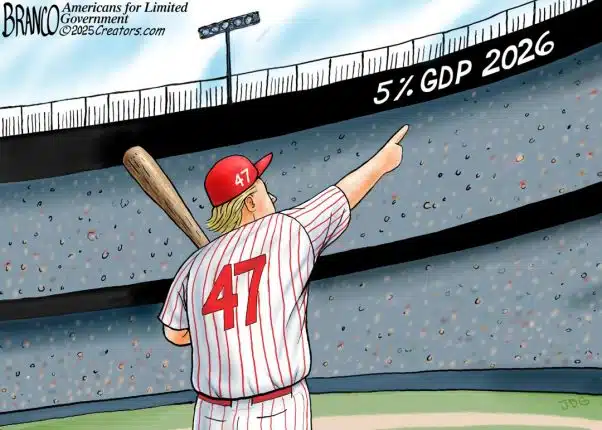Last year, Big Labor gambled on Democrats, and they lost big at both the state and federal level. Now they find themselves out in the cold in many places.
One of those places is Kentucky. Prior to the 2016 elections, Republicans held the Kentucky governorship and the state Senate, while Democrats held a 53-47 majority in the state House of Representatives. Big Labor fought hard to keep the Democrats in control of the state House, but their efforts were in vain – Republicans routed the Democrats picking up 17 seats.
As a consequence of last year’s elections, the new state legislature quickly passed a fight to work bill that lets employees decide for themselves if they want to join a union, a paycheck protection bill (which prohibits the deduction of union dues from wages unless the employee opts in to paying them), and a bill repealing the prevailing wage law (a law that required contractors on certain government contracts to pay wages at or above local union wages).
Governor Matt Bevin signed all three bills into law.
In previous years, the Republican-led state Senate had passed Right to Work legislation only to watch it die in the Democrat-run state House.
Another place where unions find themselves out in the cold is Missouri. Republicans there have tried to enact right to work legislation for the past several years, but were stymied by the Democrat governor, Jay Nixon, who was unable to run for reelection last year due to term limits.
The Republican gubernatorial candidate, Eric Greitens, ran on enacting right to work; the Democrat gubernatorial candidate, Chris Koster, ran on opposing Right to Work and received generous union support. But in the end, union support wasn’t enough, and Greitens defeated Koster by nearly six points in November.
Republican legislators wasted little time in once again passing a Right to Work bill, and Greitens signed it into law. Now, the legislature is considering reforming its prevailing wage law and passing paycheck protection legislation.
And not only have unions lost a number of political battles — they’re also losing members. According to the Bureau of Labor Statistics, there were 240,000 fewer US union members in 2016 than there were in 2015. In 1983, 20.1 percent of the US labor force belonged to a union; in 2016, only 10.7 percent of the labor force belonged to a union.
The overall rate would have been much lower if the public sector union membership rate were not so high, but both sectors have seen union membership declines last year. Between 2015 and 2016, the private sector union membership rate fell from 6.7 percent to 6.4 percent while the public sector union membership rate fell from 35.2 percent to 34.4 percent.
And the bad news for unions didn’t stop there: union members tend to be a bit older, most states saw declining union membership last year, and voters’ views of union bosses aren’t very good. The age group most likely to belong to a union was 45-64 year olds — 13.3 percent of workers in that age group belonged to a union. During 2016, union membership rates fell in 31 states, remained flat in 3 states, and rose in 16 states.
According to a Rasmussen poll taken last year, only 20 percent of likely voters believed that most union bosses do a good job of representing their members. At the same time, 57 percent believed that union bosses are out of touch with most of their members.
Facing facts like these, it’s time for union bosses to get serious about providing real value for their members, stop wasting their members’ money on pet projects, and stop playing political games.
One way that private sector unions could do this would be to start working with, rather than against, the President and help him achieve his goals of bringing back jobs from overseas and keeping existing jobs, issues that Democrats have neglected for years and where there may now be common ground with President Donald Trump.
Richard McCarty is a Senior Research Analyst at Americans for Limited Government.






